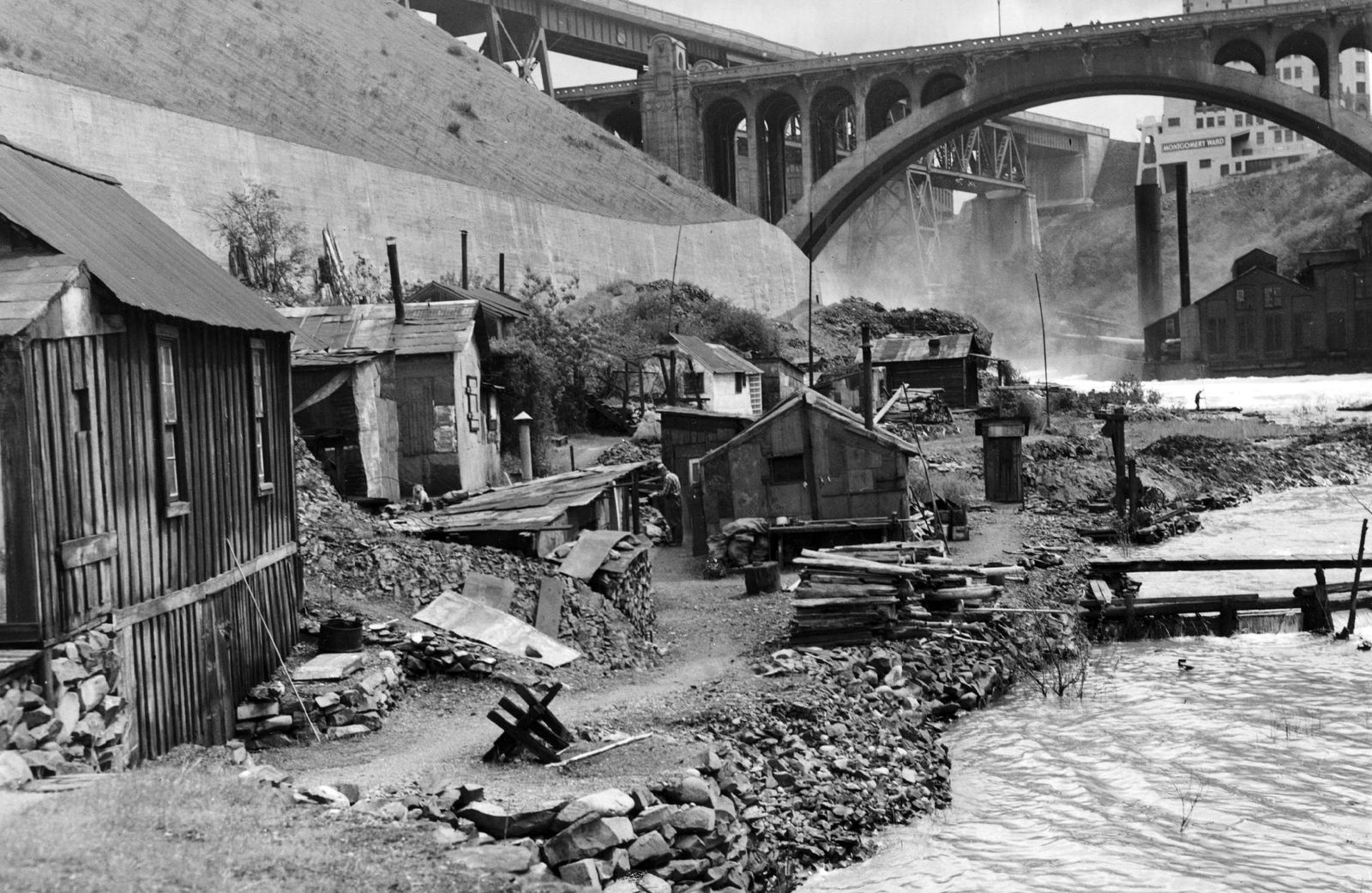
Shacktown
For several decades, there was a collection of shacks along the Spokane River downstream from the Monroe St. Bridge and under the trains that rattled along the rim of the gorge. The squatters, all men, came and went, each selling his shack for a few dollars when he moved on.
Section:Then & Now
Image One
Photo Archive
| The Spokesman-Review
Image Two
Jesse Tinsley
| The Spokesman-Review
For several decades, there was a collection of shacks along the Spokane River downstream from the Monroe St. Bridge and under the trains that rattled along the rim of the gorge. The squatters, all men, came and went, each selling his shack for a few dollars when he moved on. Reporter C.R. Stark bushwhacked down the slope in 1945 and wrote about the settlement. "Shacktown. To many citizens of Spokane, it represents an eyesore, a blotch on the landscape that should be removed without ceremony and ordinances passed to make impossible every to return. To the 20 men who live in the little cluster of shanties nestled on the bank of the Spokane River down under the Monroe St. Bridge, it represents one place in the community where man is supreme--there isn't a woman living in any of the houses. And it represents home, the spot where they can do exactly what they want to do, when they want to do it, and no one is there to tell them to stop." Stark wrote that five of the twenty were pensioners and others held regular jobs. Several spoke with foreign accents and some raised gardens and fruit trees. For the men, mostly former lumberjacks, railroaders or miners, "the cost of living is reduced to an absolute minimum." The shantytown was demolished in 1951 because of a concern over fire safety.
Share on Social Media

